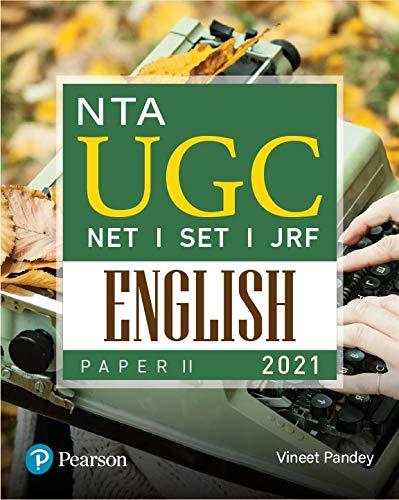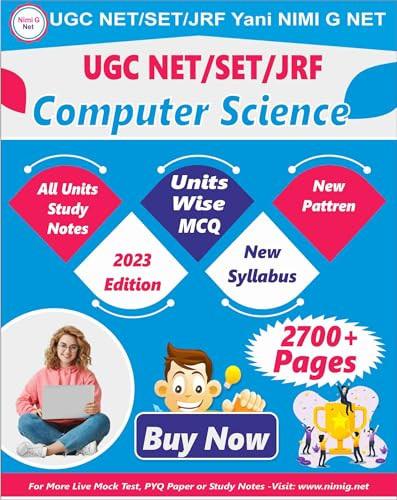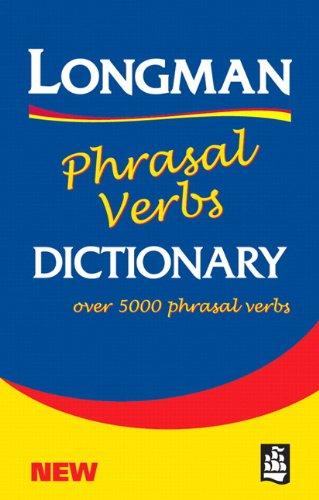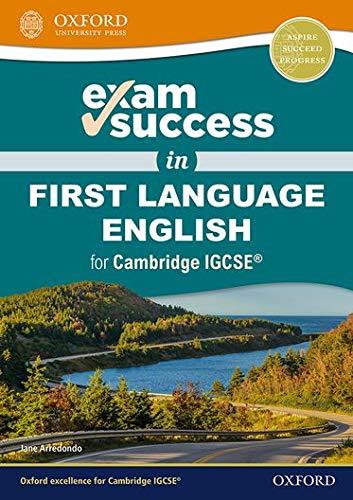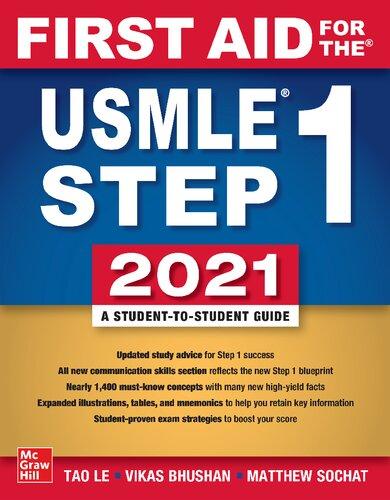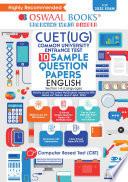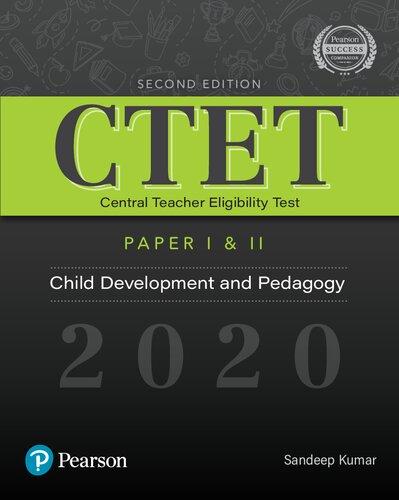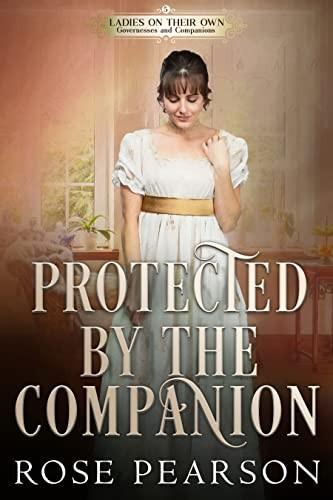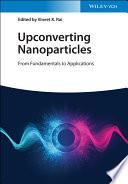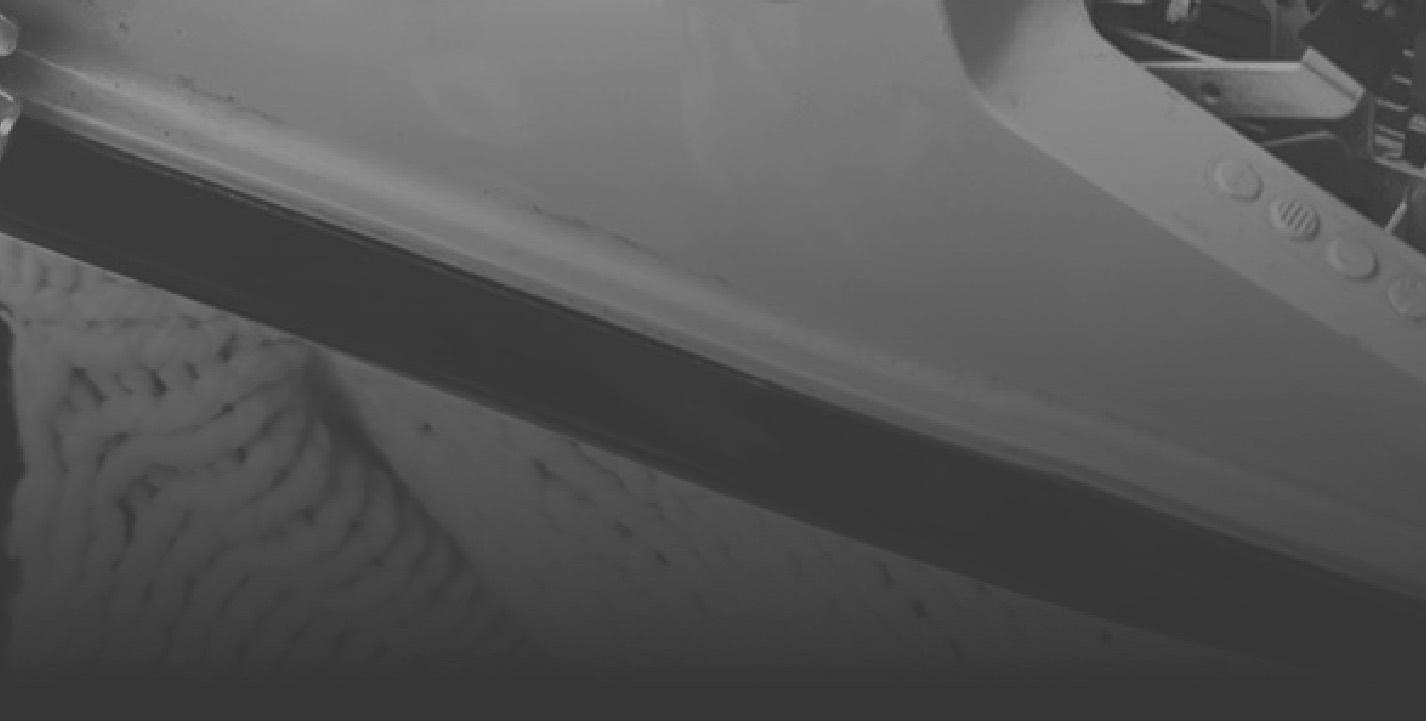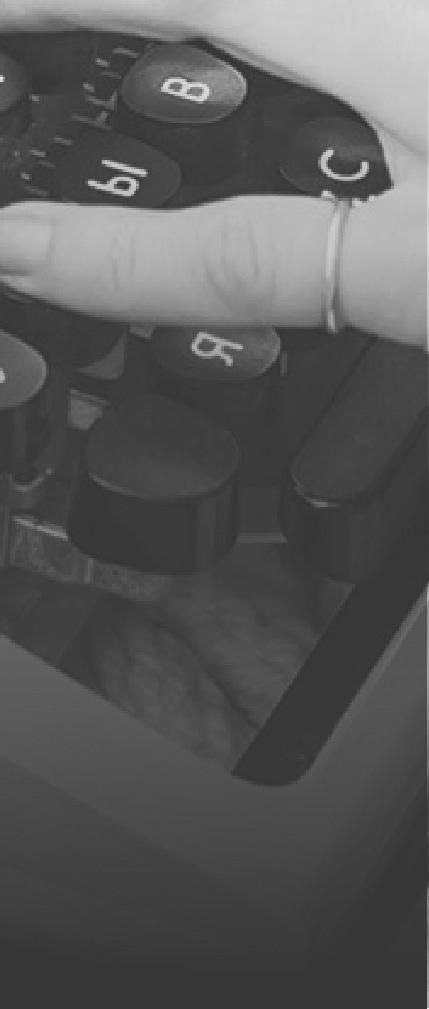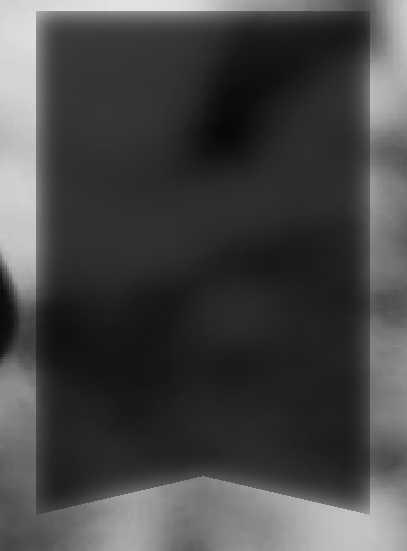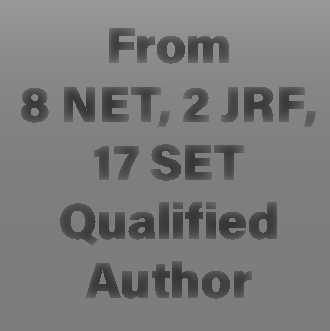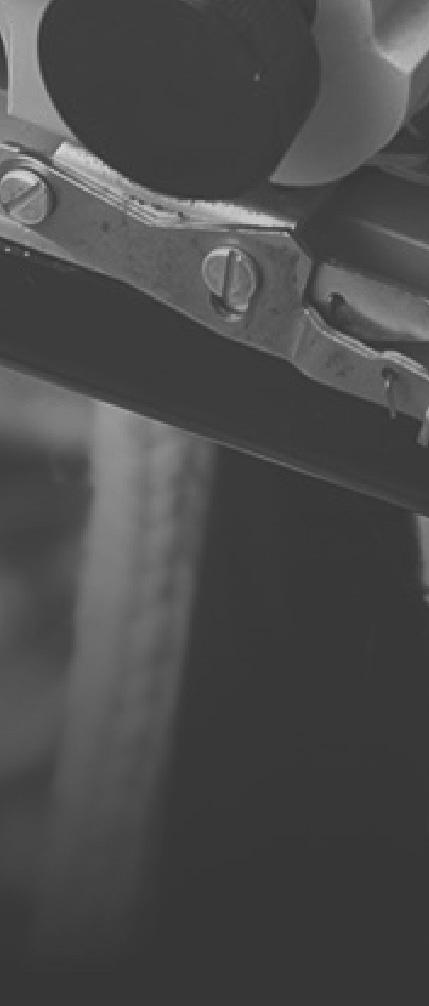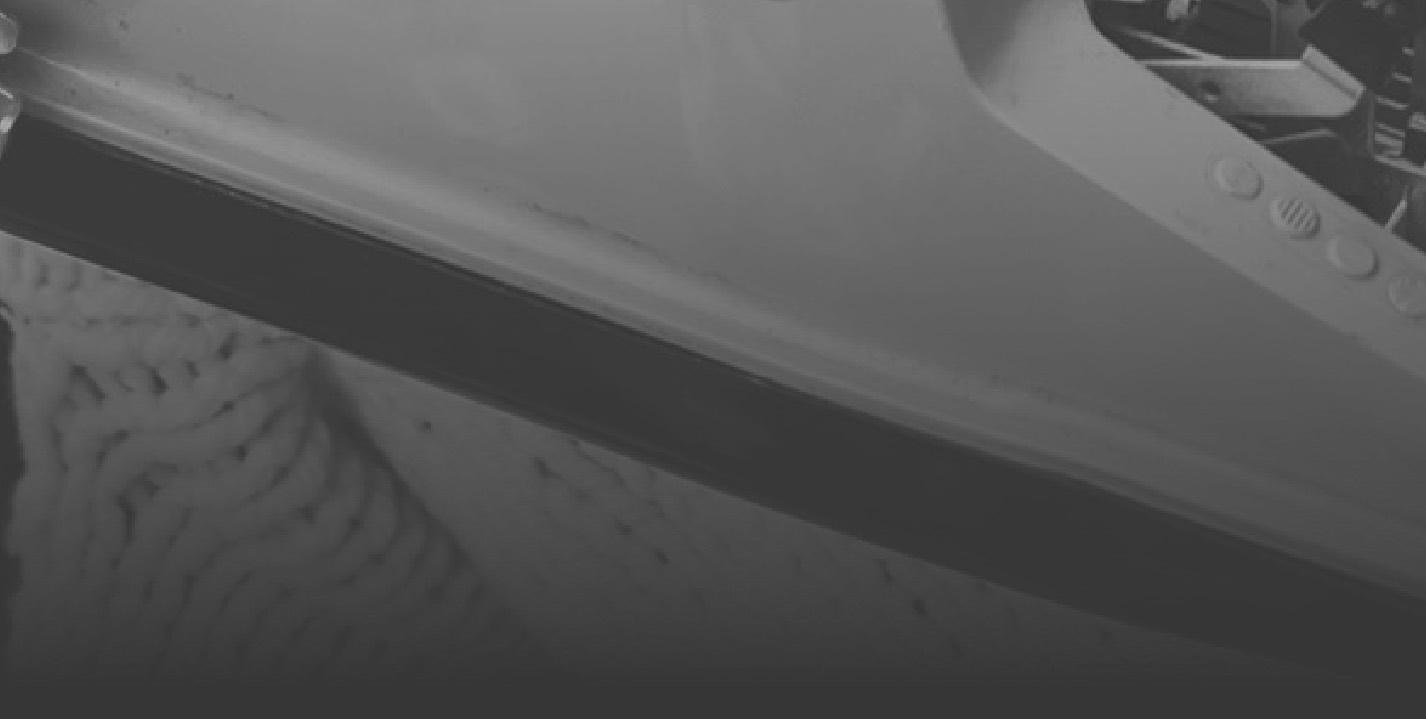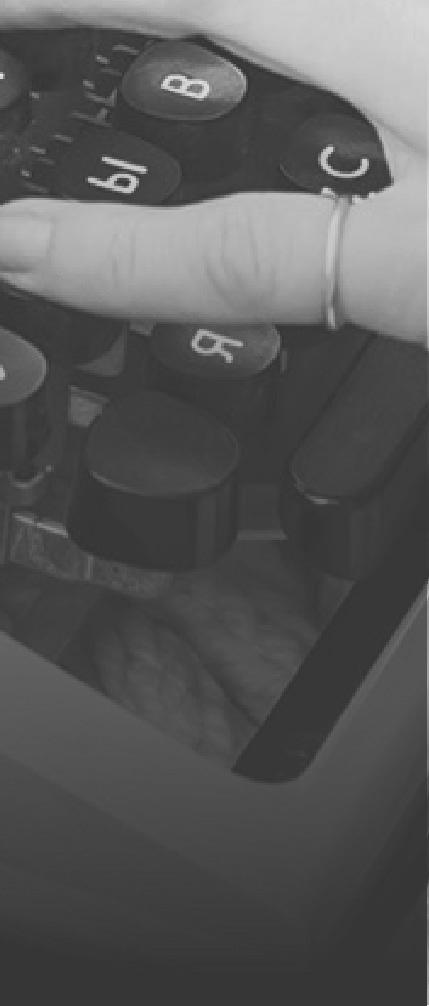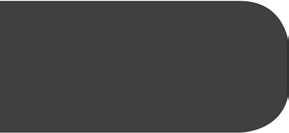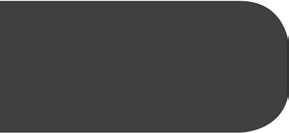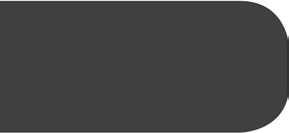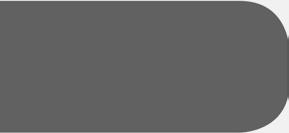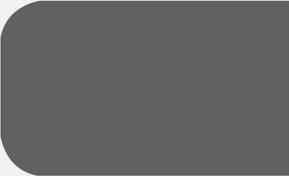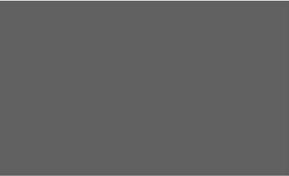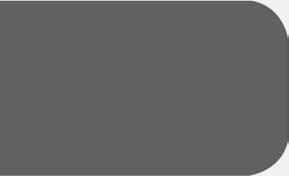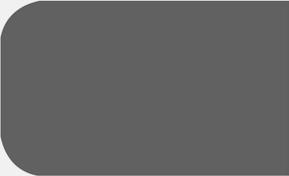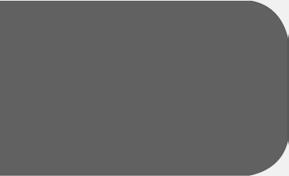NTA UGC NET 2020 Paper II English
(c) He asserted the value of poetry by giving preference to rhetoric over imitation (mimesis).
(d) He asserted the value of poetry by focusing on imitation (mimesis) rather than rhetoric.
8. Who said of the blank verse, quoting an unnamed critic, that it is ‘...verse only to the eye’, adding further that it ‘has neither the easiness of prose, nor the melody of numbers’?
(a) John Dryden
(b) Alexander Pope (c) Samuel Taylor Coleridge
(d) Samuel Johnson
9. Poetry according to Sir Philip Sidney is of three kinds. They are
(a) religious, dramatic, romantic
(b) classical, romantic, neo-classical
(c) philosophical, imaginative, narrative
(d) religious, philosophical, imaginative
10. In Anxiety of Influence which of the following definitions is given by Harold Bloom to explain the term ‘clinamen’?
(a) poetic hyperbole (b) poetic misprision
(c) poetic sublime (d) poetic supplement
11. Who among the following is known to have popularized the term ‘glocalization’?
(a) Ronald Robertson (b) Francis Fukuyama
(c) John Urry (d) John Tomlinson
12. Who among the following coined the dictum, ‘the medium is the message’?
(a) Raymond Williams
(b) Erving Go man
(c) Marshall McLuhan
(d) John Fiske
13. Who among the following presented the concept of ‘multi-accentuaiity’ of the sign, saying that signs possess an ‘inner dialectical quality’ and ‘evaluative accent’?
(a) Roland Barthes
(b) Stuart Hall
(c) Jacques Derrida
(d) Vaientin Voloshinov
14. On December 11, 1823, Rammohan Roy addressed a letter to the British authority which pleaded for modern western education and is considered historically important for the introduction of English education in India. Who was the letter addressed to?
(a) Lord Amherst (b) Lord Minto (c) Lord Macaulay (d) Lord Bentick
15. Which British administrator sought ‘to make everything as English as possible in a country which resembles England in nothing’, as recorded by Sir Thomas Munro?
(a) Lord Bentick (b) Lord Hastings (c) Lord Cornwallis (d) Lord Wellesley
16. Who among the following was the first Director of the Central Institute of English and Foreign Languages. Hyderabad (now EFL University)?
(a) Prof V. K. Gokak (b) Prof C. D. Narasimhaiah (c) Prof C. J. Daswani (d) Prof K. R. S. Iyengar
17. Which one of the following best explains the term ‘paralanguage’?
(a) The ways in which people mask what they mean by the words they use
(b) The ways in which people show what they mean other than by the words they use
(c) The ways in which words carry meanings unintended by the speaker
(d) The ways in which the silence underlying speech communicates wrong meanings
18. Which two of the following oppositions are best evoked by Hamlet’s utterance - To be or not to be’?
(A) between life and death
(B) between action and emotion
(C) between affirmation and confirmation (D) between doing and abstaining from doing
Choose the correct answer from the options given below.
(a) A and D only (b) B and D only (c) C and A only (d) D and C only
19. Who among the following linguists proposed the terms, ‘competence’ and ‘performance’?
(a) Noah Webster (b) Steven Pinker (c) Roman Jakobson (d) Noam Chomsky
20. Which one of these statements defines the scope of semiotics?
(a) Semiotics studies the sound systems of a language.
(b) Semiotics is a study of sign systems.
(c) Semiotics studies human sign system only.
(d) Semiotics is a study of non-human sign systems only.
21. Which according to Thomas Hobbes is the only ‘science’ God has bestowed on mankind, that informs the structure of his monumental work Leviathan?
(a) Astronomy (b) Architecture
(c) Occult sciences (d) Geometry
22. As mentioned in ‘My First Acquaintance with Poets’ which poet does William Hazlitt describe as the ‘only person I ever knew who answered the idea of a man of genius’?
(a) Coleridge (b) Wordsworth
(c) Byron (d) Shelley
23. Which one of the following essays holds that ‘As a method, realism is a complete failure’?
(a) Virginia Woolf, The Mark on the Wall
(b) Oscar Wilde, The Decay of Lying
(c) D.H Lawrence, Why the Novel Matters
(d) Mary McCarthy, My Confession
24. Which of the following novels is structured into a poem of 999 lines, preceded by a Foreword, followed by a Commentary and an Index?
(a) Ragtime
(b) Pale Fire
(c) The Inner Side of the Wind
(d) Hourglass
25. Which among the following novels includes a questionnaire for the reader such as ‘Do you like the story so far? Yes () No()’?
(a) Mantissa by John Fowles
(b) Watertand by Graham Swift
(c) Snow White by Donald Barthelme
(d) If on a Winter’s Night a Traveller by Italo Calvino
26. What is the subject of Ivan’s controversial essay in Brothers Karamazov?
(a) Transubstantiation (b) The evils of clergy
(c) The Eucharist (d) Ecclesiastical courts
27. Which one of the following Sherlock Holmes stories refers to a significant event in English history?
(a) The Musgrove Ritual
(b) The Speckled Band
(c) The Solitary Cyclist
(d) The Red-Headed League
28. Harold Skimpole is a character in
(a) Bleak House (b) Dombey and Son
(c) Great Expectations (d) Oliver Twist
29. Who is the author of A Fragment (1819), one of the earliest vampire stories in English?
(a) P. B. Shelley (b) Lord Byron
(c) Bram Stoker (d) Mary Shelley
30. Lala Kanshi Ram is a character in (a) Arun Joshi’s The Apprentice (b) Chaman Nahal’s Azadi (c) Anita Desai’s Fire on the Mountain (d) Kamala Markandaya’s A Handful of Rice
31. Which of the following poems by Philip Larkin deals with the trauma of a rape victim who says ‘Even so distant. I can taste the grief’?
(a) Deceptions (b) Faith Healing (c) Sad Steps’ (d) Wild Oats
32. In which of the Bog poems does Seamus Heaney speak about the ‘perishable treasure’ of a body ‘Murdered, forgotten, nameless, terrible’?
(a) Bog Queen (b) Grauballe Man (c) Punishment (d) Strange Fruit
33. Which book of Paradise Lost incorporates the speech rhythms of Adam and Eve’s marital quarrel?
(a) Book 4 (b) Book 6
(c) Book 7 (d) Book 9
34. Who among the following wrote Mazeppa, a long narrative poem about a seventeenth-century military leader of Ukraine?
(a) William Cowper (b) Lord Byron (c) P. B. Shelley (d) S. T. Coleridge
35. Which one of the following statements is appropriately true of Harold Pinter’s plays?
(a) Menace is in the air and it leads to bloody violence.
(b) Menace is in the air and it is realized through the female characters.
(c) Menace is in the air, but it is not pinned down, or explained.
(d) Menace is in the air and anarchy follows in a systematic manner.
36. To which mythological character is Faustus compared in the prologue of Dr. Faustus?
(a) Perseus (b) Theseus
(c) Icarus (d) Achilles
37. Who makes the following speech in Samuel Beckett’s Waiting for Godot?
‘Astride of a grave and a difficult birth. Down in the hole, lingeringly, the grave-digger puts on the forceps,’
(a) Estragon (b) Lucky
(c) Vladimir (d) Pozzo
38. Which of the following are the major themes in William Congreve’s The Way of the World?
(a) Jealousy and revenge
(b) Love and intrigue
(c) Intrigue and death
(d) Love and loyalty
39. What game do the characters play in Act II of Harold Pinter’s The Birthday Party?
(a) A game of chess (b) A game of cards (c) Blind man’s buff (d) Musical chairs
40. The Duchess of Malfi is based on (a) a French romance (b) an Italian novella (c) a Geman fable (d) a Scottish chronicle
41. Which two of the following strictly follow the parameters of documentation prescribed by the eighth edition of the MLA Handbook?
(A) Nunberg, Geoffrey, editor. The Future of the Book. U of California P, 1996.
(B) Puig, Manuel. Kiss of the Spider Woman. Trans. Thomas Colchie. London: Vintage, 1991.
(C) Nunberg, Geoffrey, ed. The Future of the Book. Berkeley: U of California P, 1996.
(D) Puig, Manuel. Kiss of the Spider Woman. Translated by Thomas Colchie. Vintage Books, 1991.
Choose the correct answer from the options given below.
(a) A and B only (b) A and C only
(c) A and D only (d) B and C only
42. A research hypothesis is (A) a proposition which is always true (B) a provisional explanation of anything (C) a theory which will be disproved by evidence (D) a statement which is assumed to be true for the sake of argument
Choose the most appropriate answer from the options given below.
(a) A and B only (b) B and C only
(c) B and D only (d) A and C only
43. Which two of the following aspects are to be scrupulously followed to avoid the trap of plagiarism?
(A) Subjectivity (B) Acknowledgement
(C) Citation (D) Interpretation
Choose the most appropriate answer from the options given below.
(a) A and B only (b) A and C only
(c) C and D only (d) B and C only
44. Which two texts among the following are linked to literary feminism?
(A) A Small Place (B) The Yellow Wallpaper
(C) Emma (D) A Room of One’s Own
Choose the correct answer from the options given below.
(a) A and D only (b) C and D only
(c) B and D only (d) A and C only
45. Who among the following feminist theorists posited a separate realm of female experience captured in a style of writing different from men’s?
(A) Elaine Showalter
(B) Luce Irigaray
(C) Kate Millett
(D) Simone de Beauvoir
(E) Helene Cixous
Choose the correct answer from the options given below.
(a) A, C and D only (b) B and D only
(c) C, D and E only (d) B and E only
46. Which of these statements describe correctly the basic assumption of Structuralism?
(A) Structuralism is concerned with signs and signification.
(B) A structuralist theory considers only verbal conventions and codes.
(C) Structuralism began in the works of Jacques Derrida that influenced the 20th-century literary criticism.
(D) Structuralism challenges the long-standing belief that literature reflects a given reality.
(E) All signs are arbitrary but without them we cannot comprehend reality.
Choose the correct answer from the options given below.
(a) A, C and E only (b) A, D and E only
(c) A, B and C only (d) A, B and E only
47. Which two terms among the following are associated with formalist criticism?
(A) Aura (B) Actant
(C) Narratee (D) Defamiliarization
(E) Foregrounding
Choose the correct answer from the options given below.
(a) A and C only (b) B and D only (c) B and C only (d) D and E only
48. Who among the following believed that rhyme is not an integral part of poetry?
(A) William Wordsworth (B) Horace
(C) Samuel Daniel
(D) Philip Sidney
Choose the most appropriate answer from the options given below.
(a) A and C only (b) B and D only (c) A and D only (d) D and C only
49. Who among the following are the two great masters of the French language that T. S. Eliot contrasts with Dryden and Milton in The Metaphysical Poets?
(A) Francois Villon (B) Jean Racine (C) Charles Baudelaire (D) Arthur Rimbaud
Choose the correct answer from the options given below.
(a) A and C only (b) A and D only (c) B and C only (d) B and D only
50. Which two terms from among the following are specifically linked to the work of Pierre Bourdieu?
(A) Habitus (B) Consciousness (C) Desire (D) Distinction
Choose the correct answer from the options given below.
(a) A and C only (b) A and D only (c) B and D only (d) C and D only
51. Macaulay’s Minute of 1835 sought to (A) promote European literature and science among the natives.
(B) impart knowledge of English literature and science through translated texts.
(C) encourage branches of native learning by more useful studies.
(D) stop expenditure on the publication of oriental works and spend funds only on English education.
Choose the correct answer from the options given below.
(a) A and D only (b) B and D only (c) A and C only (d) B and C only
52. Which two of the following statements are applicable to ‘metalanguage’?
It is
(A) a technical language which describes the properties of language.
(B) known as a ‘first-order’ language.
(C) a ‘second-order’ language that replaces a ‘firstorder’ language with metaphors.
(D) a ‘second-order’ language.
Choose the correct answer from the options given below.
(a) A and B only (b) C and D only
(c) A and D only (d) B and C only
53. ‘Hari wrote a poem on the mountains’. Which two of the following are admissible statements about the above sentence?
(A) The sentence is an example of lexical ambiguity.
(B) The sentence is an example of structural ambiguity.
(C) The sentence involves two deep structures.
(D) The sentence involves two surface structures. Choose the correct answer from the options given below.
(a) A and B only (b) B and C only (c) B and D only (d) C and D only
54. Which two of the following events are described in Samuels Pepys’s Diary?
(A) The Plague in London
(B) The Great Fire of London
(C) The War of Spanish Succession
(D) Essex Rebellion
Choose the correct answer from the options given below.
(a) A and B only (b) A and C only (c) B and C only (d) B and D only
55. Which two of the following inspired the rise of the periodical essay?
(A) Robert Burton
(B) Francois Rabelais
(C) Francis Bacon
(D) Michel de Montaigne
Choose the most appropriate answer from the options given below.
(a) C and A only (a) A and B only (b) C and D only (c) B and D only
56. Which two of the following works does Walter Pater regard as examples of ‘great art’ in his essay ‘Style’?
(A) Iliad (B) The Divine Comedy
(C) Les Miserables (D) Faust
Choose the most appropriate answer from the options given below.
(a) A and B only (b) A and D only (c) B and C only (d) B and D only
57. According to his essay ‘Civil Disobedience’, what two things did Thoreau learn from the night he spent in jail?
(A) He concluded that the State is ultimately weak. (B) He realized that captivity inspires courage.
(C) He realized that the neighbours are only friends during good times.
(D) He concluded that captivity brings wisdom about human affairs.
Choose the correct answer from the options given below.
(a) A and B only (b) A and C only (c) A and D only (d) C and D only
58. Which two of the following are the titles of the sections in Thomas De Quincey’s The English Mail - Coach?
(A) The Glory of Mobility
(B) The Vision of Sudden Death
(C) The Glory of Motion
(D) The Vision of Unexpected Truth
Choose the correct answer from the options given below.
(a) A and B only (b) A and D only (c) B and C only (d) B and D only
59. Which two of the following books are explorations of the art of the novel by novelists?
(A) The Brief Compass
(B) The Naive and the Sentimental Novelist
(C) The Visionary Company
(D) Testaments Betrayed
Choose the most appropriate answer from the options given below.
(a) A and B only (b) A and C only
(c) B and C only (d) B and D only
60. The lives of which of the following writers have been the subject matter of novels by Anthony Burgess?
(A) Milton (B) Marlowe
(C) Shelley (D) Keats
Choose the correct answer from the options given below.
(a) A and B only (b) A and D only
(c) B and C only (d) B and D only
61. Which two rivers are mentioned by Andrew Marvell at the beginning of To His Coy Mistress?
(A) The Ganges (B) Thames
(C) Humber (D) The Jhelum
Choose the correct answer from the options given below.
(a) A and D only (b) A and B only
(c) A and C only (d) B and C only
62. Which two poems in the following list are examples of dramatic monologue?
(A) Alfred Tennyson, Ulysses
(B) Philip Larkin, Church Going
(C) Carol Ann Duffy, Medusa
(D) Katherine Philips, A Married State
Choose the correct answer from the options given below.
(a) A and D only (b) B and C only
(c) C and D only (d) A and C only
63. Which two of the following poems are by Robert Browning?
(A) Locksley Hall
(B) The Pied Piper of Hamelin (C) The Lady of Shalott (D) Two in the Campagna
Choose the correct answer from the options given below.
(a) A and D only (b) B and C only (c) A and C only (d) B and D only
64. Which two of the following dramatists are associated with the Epic Theatre?
(A) Fernando Arrabal (B) Bertolt Brecht (C) Arnolt Bronnen (D) James Saunders
Choose the correct answer from the options given below.
(a) A and B only (b) B and C only (c) A and D only (d) B and D only
65. Which two characters/speakers among the following exhibit the studious abstraction of scholars?
(A) Shylock (B) Hamlet
(C) Il Penseroso (D) Mosca
Choose the correct answer from the options given below.
(a) A and D only (b) B and C only
(c) C and D only (d) A and C only
66. Match List I with List II
List I (Terms) List II (Theorists)
(A) arche-ecriture I. Julia Kristeva
(B) cyborg II. Donna Haraway (C) genotext III. Friedrich Schleiermacher
(D) hermeneutic circle IV. Jacques Derrida
Choose the correct answer from the options given below.
(a) A - IV, B - II, C - I, D - III
(b) A - III, B - I, C - II, D - IV (c) A - III, B - II, C - IV, D - I
(d) A - IV, B - I, C - II, D - III
67. Match List I with List II
List I (Terms) List II (Theorists)
(A) Superreader I. Michel Foucault
(B) Biopower II. Mikhail Bakhtin
(C) Bricolage III. Michael Riffaterre
(D) Chronotope IV. Claude Levi-Strauss
Choose the correct answer from the options given below.
(a) A - III, B - II, C - IV, D - I
(b) A - III, B - I, C - IV, D - II
(c) A - IV, B - I, C - III, D - II
(d) A - II, B - I, C - IV, D - III
68. Match List I with List II
List I (Critics) List II (Text)
(A) Horace I. A Defence of Rhyme
(B) John Dryden II. Timber: or, Discoveries
(C) Samuel Daniel III. Ars Poetica
(D) Ben Jonson IV. Of Dramatic Poesy
Choose the correct answer from the options given below.
(a) A - II, B - I, C - IV, D - III
(b) A - III, B - IV, C - II, D - I
(c) A - III, B - IV, C - I, D - II
(d) A - II, B - IV, C - I. D - III
69. Match List I with List II
List I (Author) List II (Text)
(A) Michel de Certeau I. Distinction
(B) John Fiske II. Betiding the Romance
(C) Pierre Bourdieu
III. Understanding Popular Culture
(D) Janice Rad way IV. The Practice of Everyday Life
Choose the correct answer from the options given below.
(a) A - IV, B - I, C - II, D - III
(b) B - III, C - IV, D - I, A - II
(c) A - IV, B - III, C - I, D - II
(d) B - III, C - I, D - IV, A - II
70. Match List I with List II
List I (Linguist) List II (Concept)
(A) Paul Grice I. language death
(B) Edward Sapir II. linguistic signs
(C) Ferdinand de Saussure III. linguistic relativity
(D) Nancy Dorian IV. cooperative principle
Choose the correct answer from the options given below.
(a) A - I, B - III, C - II, D - IV
(b) A - IV, B - III, C - II, D - I
(c) A - III, B - IV, C - I, D - II
(d) A - III, B - IV, C - II, D - I
71. Match List I with List II
List I
(Word Borrowed) List II (Source Indian Language)
(A) mongoose I. Tamil
(B) loot II. Malayalam
(C) curry III. Hindi/ Urdu
(D) betel IV. Marathi
Choose the correct answer from the options given below.
(a) A - IV, B - IIl, C - I, D - II
(b) A - IV, B - II, C - I, D - III
(c) A - II, B - III, C - IV, D - I
(d) A - II, B - I, C - IV, D - III
72. Match List I with List II
List 1 (Essayist) List II (Essay)
(A) George Orwell I. On the Artificial Comedy of the Last Century
(B) Michel de Montaigne II. Why I Write
(C) Charles Lamb Ill. A Modest Proposal
(D) Jonathan Swift IV. On the Cannibals
Choose the correct answer from the options given below.
(a) A - lll, B - IV, C - III, D -I
(b) A - II, B - IV, C - I, D - III
(c) A - IV, B - III, C - II, D - I
(d) A - II, B - III, C - I, D - IV
73. Match List I with List II
List I (Author) List II (Text)
(A) Thomas Pynchon I. G
(B) Howard Jacobson II. V
(C) Anthony Burgess III. J
(D) John Berger IV. M/F
Choose the correct answer from the options given below.
(a) A - II, B - IV, C - I. D - III
(b) A - II, B - Ill, C - IV, D - I
(c) A - II, B - III, C - I, D - IV
(d) A - IV, B - III, C - l, D - II
74. Match List I with List II
List I (Lines) List II (Poems)
(A) ‘Monuments of unaging intellect’
(B) ‘In the foul rag-andbone shop of the heart’
(C) ‘So mastered by the brute blood of the air’
(D) ‘As weary-hearted as that hollow moon’
Choose the correct answer from the options given below;
(a) A - lll, B - IV, C - II, D - I
(b) A - III, B - II C - IV, D - II
(c) A - III, B - IV, C - I, D - II
(d) A - II, B - l, C - IV, D - III
75. Match List I with List II
List I (Author) List II (Work)
(A) John Keats I. Alastor
(B) William Wordsworth II. Songs of Experience
(C) P. B. Shelley III. Lamia
(D) William Blake IV. The Excursion
Choose the correct answer from the options given below.
(a) A - III, B - I, C - IV, D - II
(b) A - III, B - IV, C - I, D - II
(c) A - I, B - IV, C - III, D - II
(d) A - IV, B - II, C - I, D - III
76. Arrange the following terms in the chronological order of emergence.
(A) Heresy of Paraphrase
(B) Stream of Consciousness
(C) Practical Criticism
(D) Defamiliarization
Choose the correct answer from the options given below.
(a) D, B, C, A (b) B, D, A, C (c) B, D, C, A (d) D, C, B, A
77. Arrange the following critical works in their chronological order of publication.
(A) Preface to Lyrical Ballads
(B) A Defence of Rhyme
(C) Life of Cowley
(D) The Frontiers of Criticism
Choose the correct answer from the options given below.
(a) A, C, B and D (b) B, A, C and D
I. Leda and the Swan
II. Adam’s Curse
III. Sailing to Byzantium
IV. The Circus Animals’ Desertion
(c) B, C, A and D (d) C, A, D and B
78. Arrange the following in the chronological order of publication.
(A) Aspects of the Theory of Syntax (B) Course in General Linguistics
(C) Semiotics and the Philosophy of Language (D) How to Do Things with Words
Choose the correct answer from the options given below.
(a) D, B, A, C (b) C, B, A, D
(c) B, D, A, C (d) B, A, D, C
79. Arrange the following in the chronological order of publication.
(A) Advancement of Learning
(B) The Origin of Species (C) On Heroes and Hero Worship (D) The Lives of the Poets
Choose the correct answer from the options given below.
(a) D, A, C, B (b) D, A, B, C (c) A, D, C, B (d) A, D, B, C
80. Arrange the following 18th-century magazines in the chronological order of publication.
(A) The Critical Review
(B) The Monthly Review (C) The Gentleman’s Magazine
(D) The Rambler
Choose the correct answer from the options given below.
(a) A, D, B, C (b) D, A, B, C
(c) B, A, C, D (d) C, B, D, A
81. Arrange the following in the chronological order of publication.
(A) Crome Yellow (B) Sons and Lovers (C) Mrs Dalloway
(D) A Portrait of the Artist as a Young Man
Choose the correct answer from the options given below.
(a) B, A, D, C (b) A, B, D, C (c) A, C, B, D (d) B, D, A, C
82. Arrange the following women novelists in the chronological order (by date of birth).
(A) Anne Bronte (B) Jane Austen (C) Ann Radcliffe (D) Fanny Burney (E) Maria Edgeworth
Choose the correct answer from the options given below.
(a) B, A, D, C, E (b) C, D, B, E, A (c) D, C, E, B, A (d) A, B, C, E, D
83. Arrange the following authors in the chronological order of their birth.
(A) Oscar Wilde (B) William Langland (C) Geoffrey Chaucer (D) John Dryden (E) Alexander Pope
Choose the correct answer from the options given below.
(a) B, C, D, E, A (b) A, B, C, E, D (c) B, C, D, A, E (d) C, B, A, D, E
84. Arrange the following plays in their chronological order
(A) The Country Wife (B) Cymbeline
(C) The Spanish Tragedy
(D) The Rivals
Choose the correct answer from the options given below.
(a) B, A, C, D (b) B, C, D. A (c) C, B, A, D (d) C, A, B, D
85. Arrange the following plays in the chronological order of publication.
(A) All for Love
(B) Venice Preserved
(C) The School for Scandal
(D) The Country Wife
Choose the correct answer from the options given below.
(a) B, C, A, D (b) D, A, B, C
(c) C, B, D, A (d) A, D, C, B
86. Given below are two statements: one is labelled as Assertion A and the other is labelled as Reason R
Assertion A: Research methods are a range of tools that are used for different types of inquiry.
Reason R: The tools used in research are products of the situations in which they are applied. In light of the above statements, choose the correct answer from the options given below.
(a) Both A and R are true and R is the correct explanation of A
(b) Both A and R are true and R is NOT the correct explanation of A
(c) A is true but R is false
(d) A is false but R is true
87. Given below are two statements: one is labelled as Assertion A and the other is labelled as Reason R
Assertion A: Signs are never neutral or Innocent.
Reason R: In all cases signs are organized into systems that convey some meaning.
In light of the above statements, choose the correct answer from the options given below.
(a) Both A and R are true and R is the correct explanation of A
(b) Both A and R are true but R is NOT the correct explanation of A
(c) A is true but R is false
(d) A is false but R is true
88. Given below are two statements.
Statement I: Consumption is an outcome of self-interest and a maximization of personal pleasure.
Statement II: There are strong correlations between social status and such things as housing styles, musical tastes and food preferences.
In light of the above statements, choose the correct answer from the options given below.
(a) Both Statement I and Statement II are true
(b) Both Statement I and Statement II are false
(c) Statement I is correct but Statement II is false
(d) Statement I is incorrect but Statement II is true
89. Given below are two statements.
Statement I: The Orientalists in British India were not sympathetic towards India’s ancient learning.
Statement II: William Jones thought that in ‘imagination’, ‘ratiocination’, and philosophy, Indians were by no means inferior to Europeans.
In light of the above statements, choose the correct answer from the options given below.
(a) Both Statement I and Statement II are true
(b) Both Statement I and Statement II are false
(c) Statement I is correct but Statement II is false
(d) Statement I is incorrect but Statement II is true
90. Given below are two statements: one is labelled as Assertion A and the other is labelled as Reason R.
Assertion A: The introduction of English in India was primarily for the benefit and consolidation of British power.
Reason R: English catered to the social and economic aspirations of the emerging middle class and urban elites in India.
In light of the above statements, choose the correct answer from the options given below.
(a) Both A and R are true and R is the correct explanation of A
(b) Both A and R are true but R is NOT the correct explanation of A
(c) A is true but R is false
(d) A is false but R is true
Direction for Questions 91–93: Read the given passage and answer the questions that follow Daybreak.
‘At dawn she lay with her profile at that angle Which, sleeping, seems the stone face of an angel; Her hair a harp the hand of a breeze follows To play, against the white cloud of the pillows. Then in a flush of rose she woke, and her eyes were open,
Swimming with blue through the rose flesh of dawn, From her dew of lips, the drop of one word Fell, from a dawn of fountains, when she murmured ‘Darling,’ — upon my heart the song of the first bird. ‘My dream glides in my dream,’ she said, ‘come true, I waken from you to my dream of you.’
O, then my waking dream dared to assume The audacity of her sleep. Our dreams Flowed into each other’s arms, like streams.’
—Stephen Spender
91. Which among the following best describes the lady’s face as ‘At dawn she lay...’ asleep?
(a) Her face appears to be that of a stone sculpture’s.
(b) The side-view of her face appears to be that of a sculpted angel’s.
(c) Her face appears to be that of a stone-angel.
(d) The side-view of her face appears to be that of an angel’s.
92. Match List I with List II
List I (The Item) List II (What it is an example of)
(A) ‘Her hair’ I. player
(B) ‘pillows’ II. ‘a harp’
(C) ‘breeze’ III. ‘rose’
(D) ‘cheeks’ IV. ‘cloud’
Choose the correct answer from the options given below.
(a) A - I, B - II, C - IV, D - III
(b) A - III, B - I, C - II, D - IV
(c) A - II, B - IV, C - I, D - III
(d) A - IV, B - III, C - I, D - II
93. Match List I with List II
List I (item) List II (Whet it is an example of)
(A) ‘Her hair a harp’ I. Simile
(B) ‘the hand of a breeze’ II. Metaphor
(C) ‘seems the stone face’ III. Oxymoron
(D) ‘my waking dream’ IV. Synecdoche
Choose the correct answer from the options given below.
(a) A - ll, B - IV, C - I, D - III
(b) A - IV, B - II, C - III, D - I
(c) A - IV, B - III, C - II, D - I
(d) A - I, B - IV, C - II, D - III
Direction for Questions 94–95: Read the given passage and answer the questions that follow.
Logic cannot have any empirical part; that is, a part in which the universal and necessary laws of thought should rest on grounds taken from experience; otherwise it would not be logic, i.e., a canon for the understanding or the reason, valid for all thought, and capable of demonstration. Natural and moral philosophy, on the contrary, can each have their empirical part since the former has to determine the laws of nature as an object of experience; the latter, the laws of the human will, so far as it is affected by nature: the former, however, being laws according to which everything does happen; the latter, laws according to which everything ought to happen. Ethics, however, must also consider the conditions under which what ought to happen frequently does not.
—Immanuel Kant
94. ‘Logic cannot have any empirical part’, because (A) laws of thought are subjective.
(B) it propounds laws whose applicability can be shown.
(C) its laws are valid for all thought (D) its laws are valid for everyone’s experience. Choose the most appropriate answer from the options given below.
(a) A and D only
(b) B and C only
(c) A and C only
(d) B and D only
95. Based on the given passage which two of the following statements are correct?
(A) For natural philosophy, nature influences the laws.
(B) For moral philosophy, nature is to be experienced.
(C) Natural philosophy does not describe how things actually do happen.
(D) Moral philosophy accounts for what should be, Choose the correct answer from the options given below.
(a) A and C only (b) B and D only (c) C and D only (d) A and D only
Direction for Questions 96–98: Read the given passage and answer the questions that follow.
‘And the creature run from the cur?
There thou mightst behold the great image of authority: a dog’s obeyed in office. —
Thou rascal beadle, hold thy bloody hand! Why dost thou lash that where? Strip thine own back; Thou hotly lust’st to use her in that kind
For which thou whipp’st her. The usurer hangs the cozener.
Through tatter’d clothes small vices do appear; Robes and furr’d gowns hide all. Plate sin with gold, And the strong lance of justice hurtless breaks; Arm it in rags, a pigmy’s straw doth pierce it.’
King Lear
96. Who speaks these lines and to whom?
(a) Edgar to Lear
(b) Goneril to Edgar
(c) Lear to Gloucester
(d) Gloucester to Lear
97. In the passage, the church officer is asked to whip his own back rather than the prostitute’s because (a) as a religious man he should punish himself for others’ sins.
(b) he at one time had lusted after her.
(c) men like him make them prostitutes.
(d) he does not have the authority to whip a woman.
98. The two sentences in the lines from ‘Through tatter’d clothes....’ to ‘...straw doth pierce it’ deal with two foibles, (i) vice and (ii) sin. About these two, the speaker says that
(a) Vice afflicts all but sin afflicts only the weak.
(b) Sin afflicts all but vice afflicts only the strong.
(c) Sin and vice are seen in both the weak and the strong.
(d) Sin and vice are palpable in the weak and impalpable in the strong.
Direction for Questions 99–100: Read the given passage and answer the questions that follow.
The surgeon deposited it in her arms. She imprinted her cold, white lips passionately on its forehead; passed her hands over her face; gazed wildly around; shuddered; fell back — and died. They chafed her breast, hands, temples; but the blood had stopped forever. They talked of hope and comfort. They had been strangers too long. ‘It’s all over, Mrs. Thingummy!’, said the surgeon at last.
—Dickens, Oliver Twist
99. In the expression, ‘passed her hands over her face’, the ‘face’ is of
(a) the lady surgeon (b) the child
(c) the nurse (d) the patient
100. The implication of ‘they had been strangers too long’ is
(a) Those who spoke of ‘hope and comfort’ had been strangers too long,
(b) ‘Hope’ had been stranger to ‘comfort’ for too long.
(c) ‘Hope and comfort’ had been stranger to the patient too long.
(d) ‘Hope and comfort’ had been strangers to the surgeon, nurse and the patient too long.
answer keys
1. (d) 2. (b)
(a)
(d)
(a)
(c)
(a)
(c)
(a)
(d)
(c)
(a)
(d)
(c)
(c)
(d)
(b)
(c)
(d)
(b)
(d)
(d)
(b)
(d)
(b)
(c) 83. (a)
(b) 92. (c)
(a)
(b)
(a)
(b)
(c)
(b)
(d)
